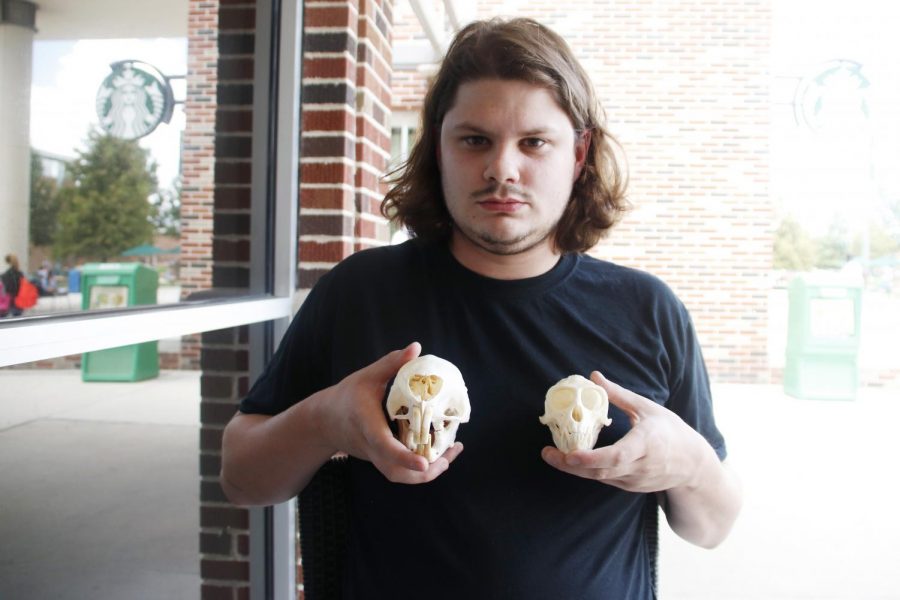From head to skull
Austin George has turned his talent of cleaning animal heads into a hobby. He posts pictures of his skulls on his Instagram page.
September 13, 2018
While some people choose to collect items such as stamps, coins or memorabilia, this student takes interest in cleaning and preserving the skulls of deceased animals.
Featured on the “Humans of Southeastern” Instagram page, Austin George, a senior general studies major, has a huge collection of skulls and other animal remains. He currently has over 320 species of animals’ skulls, and he shared some of the other items he collects.
“I have shark jaws, insects, fossils, sea shells,” said George. “I have a monkey’s entire organ system in a jar.”
George shared that his dad, a biologist, was one of his influences for starting his collection eight years ago. George has also learned taxidermy from his dad, but stated that he prefers skulls since he finds taxidermy to be a more difficult skill.
“It’s a long hard process to do taxidermy, but I’ve done a few small ones,” said George. “I’ve done a rat and an iguana.”
George explained how and where he gets his raw material.
“I could say that I probably have a different person on every continent except Antarctica I can talk to and get stuff from, and they’re usually just the byproduct of humans,” said George. “Somebody hunts something, and they don’t want the head. So, I get it. We usually get stuff that dies in zoos or in wildlife parks.”
Since some of his heads are shipped internationally, George shared a struggle that he faces in the buying process.
“You can’t just get the animal you want,” said George. “A lot of animals require a lot of paperwork, especially if you’re buying out of the country. You’ve got to get all these permits and stuff. So, it gets expensive.”
George gets the heads shipped to him in the mail frozen, and he explained how the heads are cleaned.
“I use beetles, they’re called Dermestid beetles, and I get the skull, and I skin it out,” said George. “The beetles will clean it. Then, I’ll stick it in peroxide and ammonia to get all the oil and make it white.”
George does not use chemicals other than peroxide and ammonia to clean the skulls. He clarified this because some people assume that he uses bleach to get the skull white. He explained why using bleach is a mistake.
“What it does is it dries out the bone, and it takes out all the calcium,” said George. “It just destroys what the make up of bone is. So, it kind of just makes the bone chalky and dusty, and it cracks.”
George said that the time it takes to finish a skull depends on the animal’s head size. Something the size of a rat could take a day while something the size of a dog could take a couple of weeks.
Practicing this craft for several years, George shared the most difficult type of animal skull to preserve.
“The most annoying thing to clean are fish,” said George. “Fish skulls aren’t like ours. They’re made up of a whole bunch of bones, and they’re super oily. So, it’ll take me like six months to do a fish skull.”
Going from college to career, George shared that he does not have a definite career goal, but he does express interest in working at a museum. For now, he wishes to continue his studies after his undergraduate degree.
“I just want to graduate and then find a job and go from there,” said George. “So, I want to get a master’s degree, maybe my doctorate degree. I want to do anthropology looking at human remains.”









